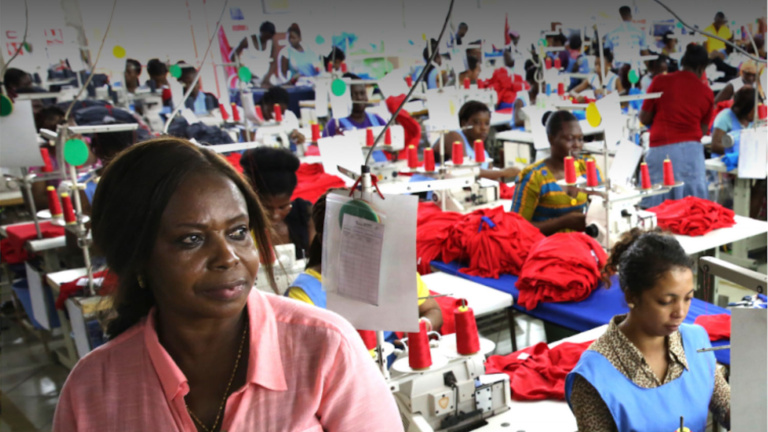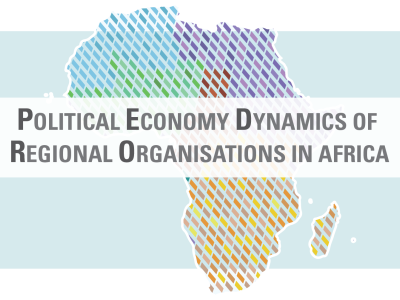
Doing business right in Ethiopia
Interest is growing in Ethiopia as a sourcing destination for the apparel industry. As the country’s landscape evolves and industrial parks rise, global brands and suppliers have a unique opportunity to invest in women’s empowerment to ensure that the “Made in Ethiopia” label becomes synonymous with decent work.
The global market for textiles and apparel is currently worth US $1.1 trillion, and set to grow to $2.1 trillion by 2025. For the past decade, the products that sustain this burgeoning industry have been manufactured predominantly in China, Bangladesh, Vietnam, and India. In recent years, however, another country has begun to climb on lists of up-and-coming sourcing locations: Ethiopia.
Ethiopia is taking steps to encourage foreign investment, in order to support its own ambitious goal of securing middle-income status by 2025. Its second Growth and Transformation Plan (GTPII) envisages creation of 750,000 jobs in large and medium-scale industry, with manufacturing a priority. To kick-start this process, eight major industrial parks for export-oriented apparel are being constructed and coming online one by one.
An attractive proposition with major challenges
The industrial parks are financed largely by suppliers in the ready-made garment industry. They find Ethiopia attractive for several reasons. First, the country is strategically located for export to destinations with preferential trade agreements. Second, it has 3.2 million hectares of unexploited land and a climate suitable for growing cotton, offering the potential for vertically-integrated operations (“from fibre to fashion”). Third, it has a plentiful and growing workforce that costs less than in Asia, where workers’ wages are rising.
Each of these attractions, however, has related challenges. Ready trade routes is one. A landlocked country, Ethiopia relies on the external port of Djibouti, through which more than 95% of its imports and exports pass. The Ethiopia-Eritrea war resulted in a border that is completely off limits for trade. Djibouti became the go-to trade flow route connected by one single railway which began commercial operations January 2018. Ethiopia’s lack of physical infrastructure, embodied by this single railway link, is a major reason why the expansion and development of the apparel industry has slowed.
Another challenge is to make the industrial parks autonomous and efficient. Social infrastructure, like housing, has not yet been set up for workers, though most have uprooted themselves from rural homelands to take the jobs newly created. In addition, attracting talent to formal jobs in an industry that, until now, barely had a footprint in Ethiopia means onboarding a workforce that has no experience in a regimented factory setting. Developing among workers the soft skills required to effectively function in formal workplaces is seen by suppliers to the global brands as a major challenge. This could be why absenteeism and worker turnover rates remain high (up to 8% per month), despite Ethiopia’s plentiful workforce.
Several international companies have made statements about “getting things right from the start”; and experiences in other countries affirm that this is preferable to retrofitting solutions. For “Made in Ethiopia” to become a force for social good, the ready-made garment industry must both understand the social challenges and commit to the empowerment of women.
Understanding the nuances of the social challenges
Understanding the social challenges associated with the industry’s labour pool means understanding the composition of the workforce. Most of the people taking up the new jobs are young women, between 18-25 years old, usually unmarried and usually without children. The majority of these women left rural communities to find a job. They have little education and little awareness of their rights. Moreover, the regimented work environment that a factory setting entails is entirely new to them.
In addition, most production companies setting up in the industrial parks are Asian suppliers that have been nudged by their loyal buyers to put down roots in Ethiopia. They import most of their managers. Management teams thus consist largely of expatriates who had never before set foot in Ethiopia and know little of the local language and culture. This creates a clear divide between management and workers. That divide can be a barrier to creating an enabling and high-performance workplace. The challenges are exacerbated by the ongoing high pressure of production lines.
A recent HERproject study on the Ethiopian apparel industry sought both to map the industry’s rapidly evolving landscape and to unpack the particular needs of women workers. The findings suggest that the industry could reap significant benefit from embracing a mandate to improve women’s health, equality, confidence, and self-esteem.
Kicking off empowerment
HERproject is a collaborative initiative of global brands, their suppliers, and local partners. It aims to bridge the gap between workers and managers, addressing the needs of both groups. It organises workplace-based interventions to give women workers a voice, through programmes in health, financial inclusion, and gender equality, while working toward alignment of workplace systems, policies, and procedures to women workers’ needs.
Since October 2017 the program has been piloting in Bole Lemi Industrial Park. The international companies investing in the initiative have the opportunity not just to build health awareness and financial literacy among their personnel, but more broadly, to increase the self-esteem and confidence of thousands of young women. There is a chance to broaden the range of choices available to the young women who have migrated from their rural homes and ensure that these women feel capable of making and acting on such choices.
HERproject will also be rolled out at Hawassa Industrial Park in 2018. Its progress, and the continued empowerment of women in Ethiopia, will depend not just on the support and commitment of international companies, but also on the political and economic wellbeing of the country. For the moment, Ethiopia’s growth as a apparel sourcing country remains fragile. But if development of this industry continues, and does so in the right way, a generation of young women could benefit.
About the author
Margaux Yost is Manager HERproject at BSR. She is the global lead for HERproject’s health pillar and oversees the program’s expansion in East Africa.
Dominic Kotas is Communications Associate of BSR’s Collaborative Initiatives.
Read the full magazine issue









